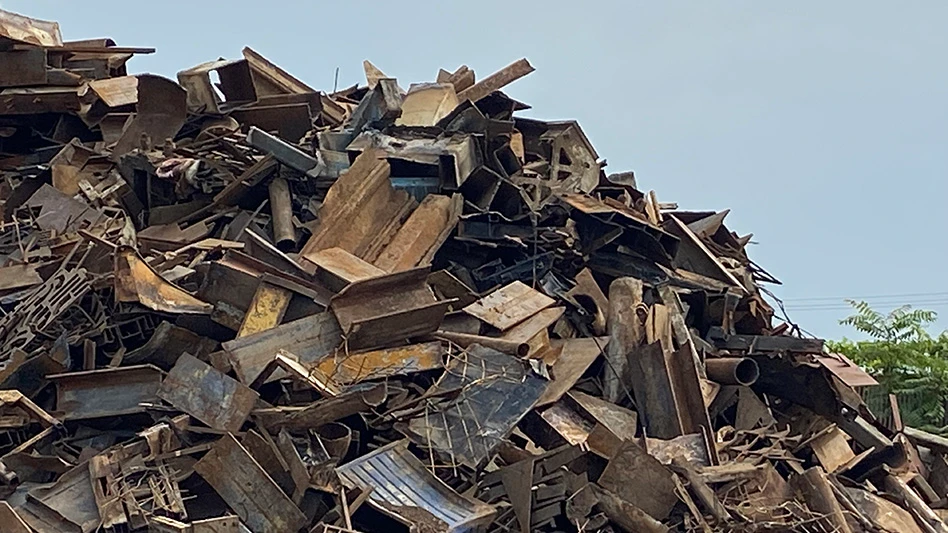
Recycling Today archives
Shredded scrap has gained popularity at melt shops around the world during the past several decades, but global demand for cut grades and ferrous bales remains a vital part of the steel and scrap sectors.
Sheared and baled No. 1 and No. 2 heavy melting steel (HMS), or bundles, are some of the most commonly traded grades. HMS particularly is prevalent in the bulk shipping ferrous scrap export sector. The plate and structural (P&S) grade present processors that do not own a shredder with another material preparation option.
Metals pricing and business information service Davis Index tracks more than 200 HMS prices, ranging from bulk shipped cargoes from major world ports such as New York to HMS prices paid at ports in India or Japan.
Shredders are considered to carry higher operating and maintenance costs compared with shears and balers, so scrap processors who own both types of equipment keep a close eye on price differences between shredded scrap and cut grades.
A look at ferrous prices in mid-January, courtesy of Davis Index, shows 50:50 blended HMS No. 1 and 2 scrap cost and freight (CFR) to Taiwan checking in at $420 per ton, while at Vietnamese ports a similar load could fetch $430 per ton.
Turkish buyers, meanwhile, were buying an 80:20 HMS No. 1 and No. 2 blend for $410 on a spot basis. Buyers taking delivery at India’s Nhava Sheva port (for an 80:20 HMS blend from the United States East Coast) were paying $437.77 per ton the same day, but with cost, insurance and freight (CIF) terms.
Shredded grades Davis Index tracks are fewer in number (though there are more than 110), so trading patterns are more than sufficient to offer comparisons.
Buyers at the Nhava Sheva port were bidding a $20 per ton premium--$457.77 per ton—for a 40:10 shredded grade sent from the U.S. East Coast. In Turkey, Davis Index lists a $429.77 CFR price for shred on the same day HMS was fetching $410 per ton—again, about a $20 premium.
In East Asia in mid-January, Davis Index lists a $425 CFR price for shred into ports into Taiwan and $428 per ton into Vietnam, seemingly indicating the lack of a premium for shred in those markets.
Because of the high operating cost of shredders, lower overall ferrous scrap prices are generally considered a threat to margins for shredder operators even more so than for those companies that operate shears and balers. The continued widespread acceptance of cut grades in the international market is likely a helpful circumstance to shredder operators that also have the option of using large-volume shears and balers.
A Recycling Today article from 2018 quotes Jeff Ham, who then was with United States-based recycling equipment maker Harris, as saying, “A guillotine shear in the 1,000-ton range is a vital piece of equipment in a scrap yard. This machine will process scrap at a much lower cost per ton than processing it through a shredder.”
Shredding remains a foremost option for processors that want to handle auto hulks, appliances and other steel-bearing (but mixed material) scrap. However, when the spread between the two grades begins to narrow, the cut grades made by shears gain increased attention from scrap processors that have access to the alternative.
Latest from Recycling Today
- BMW Group, Encory launch 'direct recycling’ of batteries
- Loom Carbon, RTI International partner to scale textile recycling technology
- Goodwill Industries of West Michigan, American Glass Mosaics partner to divert glass from landfill
- CARI forms federal advocacy partnership
- Monthly packaging papers shipments down in November
- STEEL Act aims to enhance trade enforcement to prevent dumping of steel in the US
- San Francisco schools introduce compostable lunch trays
- Aduro graduates from Shell GameChanger program





